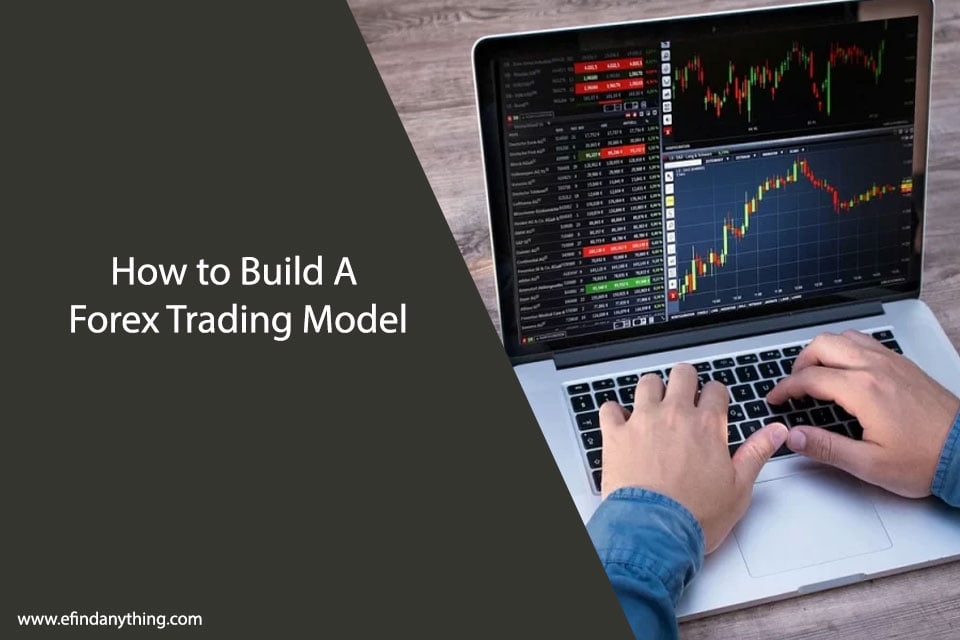A Forex trading model is essentially your personalized roadmap, guiding you through the labyrinth of currency pairs, market trends, and economic indicators. It’s the compass that helps you make sense of the intricate dance between global currencies, enabling you to capitalize on opportunities and manage risks effectively. But how does one go about constructing such a powerful tool?
In this article, we’ll find out the details of building a Forex trading model, including the integration of tools like a forex CRM, breaking down the process into actionable steps.. So, whether you’re a novice trader looking to establish a solid foundation or a seasoned investor seeking to refine your strategies, join us on this journey to demystify the art of constructing a Forex trading model.

Table of Contents
What is a Forex Trading Model?
A Forex trading model is essentially a strategic blueprint that traders use to navigate the complexities of the foreign exchange market. Think of it as a personalized guide that helps you make sense of the intricate dynamics among different currency pairs, market trends, and economic indicators. This model acts as a compass, providing direction in the vast landscape of global currencies. By incorporating various elements like technical analysis tools, risk management strategies, and backtesting, a Forex trading model assists traders in making informed decisions.
An example of a simple Forex trading business model strategy involves using a moving average crossover. In this strategy, traders focus on two moving averages with different timeframes, such as a shorter-term and a longer-term moving average. When the shorter-term moving average crosses above the longer-term moving average, it signals a potential uptrend, and traders may consider going long. Conversely, when the shorter-term moving average crosses below the longer-term moving average, it indicates a potential downtrend, and traders may consider going short. This uncomplicated strategy leverages the power of trend analysis through moving averages, providing a clear framework for traders to make decisions based on the direction of the market. However, it’s essential to note that while simple, all trading strategies carry inherent risks, and prudent risk management practices should be applied.
How to Build a Forex Trading Model
Conceptualize the Trading Model
Begin by meticulously defining the core principles that will govern your trading decisions. Reflect on your risk appetite, considering how much you’re willing to expose your capital to market fluctuations. Evaluate your preferred trading style, whether it’s day trading, swing trading, or a longer-term approach. Factor in the time you can realistically dedicate to monitoring and analyzing the markets.
This phase of conceptualization is about laying a robust foundation for your trading model. It’s about outlining the rules and principles that align seamlessly with your unique trading goals and preferences. A clear and well-thought-out conceptualization not only serves as a guide for the subsequent steps but also acts as a compass, ensuring that your trading model is anchored in a solid strategic framework.
Identify the Forex Security to Trade
This process requires a nuanced assessment of the unique characteristics inherent in various currency pairs. Considerations of liquidity include evaluating how easily a currency can be bought or sold without causing significant price fluctuations. Analyze volatility, examining the degree of price variability, as it impacts your risk tolerance and potential profit opportunities.
Choose currency pairs that not only resonate with your overall strategy but also exhibit characteristics that complement your risk appetite and preferred trading style. Whether you are drawn to the stability of major currency pairs or the potential opportunities in exotic pairs, this step ensures that your trading model is finely tuned and specifically tailored to the unique dynamics of the chosen Forex securities.
Plug-In the Forex Specific Parameters
These parameters encompass a spectrum of elements, ranging from technical indicators to chart patterns, all intricately woven into the fabric of the currency markets. It’s at this juncture that your conceptualized model takes on a more tangible form, evolving into an actionable plan finely tuned to the nuances of the Forex market.
Consider indicators such as moving averages, Relative Strength Index (RSI), or the Moving Average Convergence Divergence (MACD), depending on your strategy. Assess chart patterns like head and shoulders, triangles, and flags, seeking visual cues that can guide your decision-making process. Each parameter you plug into your model should align seamlessly with the principles and objectives outlined during the conceptualization phase.
Set Your Trading Objectives
This step involves defining precise and achievable trading goals that harmonize with your overarching financial aspirations. Consider factors such as profit targets, determining the level of returns you aim to achieve. Factor in your risk tolerance, acknowledging the amount of potential loss you are willing to withstand in pursuit of your objectives. Additionally, ponder the duration of your trades – whether you prefer quick, intraday movements or are inclined towards more extended positions.
Having crystal-clear trading objectives ensures that your trading model is purposeful and directed toward tangible outcomes. These objectives act as a roadmap, keeping your strategies aligned with your broader financial vision. By anchoring your model in well-defined objectives, you enhance its effectiveness as a strategic tool in the ever-evolving landscape of Forex trading.
Backtesting for Model Optimization
This process involves subjecting your model to a rigorous evaluation of its historical performance before deploying it in real-time trading scenarios. The primary goal is to assess its effectiveness and identify areas for improvement.
Through backtesting, you apply your model to past market data, simulating how it would have performed under various conditions. This historical analysis provides valuable insights into the strengths and weaknesses of your model, offering a glimpse into its behavior during different market trends and events. Carefully examine the outcomes, taking note of how your model responds to diverse scenarios, from volatile market conditions to more stable periods.

Benefits of Building a Forex Trading Business Model
A tailored trading model enhances decision-making. By incorporating specific parameters, indicators, and risk management strategies, traders gain a systematic approach to analyzing opportunities and managing risks. This systematic approach not only reduces the impact of emotions but also fosters consistency in trading decisions.
The benefits extend to risk management. A robust trading model allows traders to set clear risk parameters, defining the amount of capital at stake in each trade. This disciplined approach contributes to capital preservation, a cornerstone of long-term success in Forex trading.
Furthermore, a well-constructed trading model facilitates adaptability. The ability to backtest and optimize the model based on historical data empowers traders to refine their strategies and make data-driven adjustments.
Lastly, a trading model instills accountability. With clearly defined objectives and rules, traders can objectively evaluate their performance against predetermined benchmarks. This accountability not only aids in continuous improvement but also reinforces discipline in sticking to the established trading plan.
In conclusion, this model brings clarity, consistency, and risk management to your trading. As you test your model with past data, you refine it for real-world challenges. The journey of building a Forex trading model isn’t just about rules; it’s a pathway to better decision-making and success in navigating the dynamic world of currency trading.





